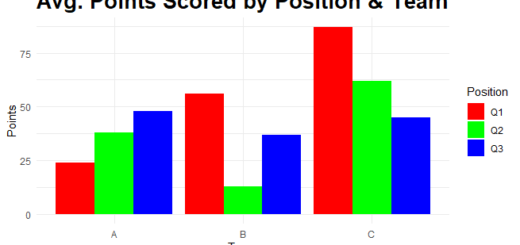How to Create Frequency Tables in R
How to Create Frequency Tables in R, frequency tables, also known as histograms or bar charts, are a common way to visualize and analyze data.
Frequency tables provide a summary of the distribution of a variable by showing the number of observations that fall into each category or bin.
In this tutorial, we’ll explore how to create frequency tables in R using the built-in functions `table()` and `barplot()`.
We’ll also provide examples and best practices for using these functions effectively.
Business leader’s approach towards Data Science » finnstats
1. The `table()` Function
The `table()` function is a built-in R function that creates a frequency table or cross-tabulation of two or more variables.
This function takes one or more arguments, which can be vectors, factors, or data frames. Here’s the syntax:
table(x, y = NULL, ...)
Let’s look at an example of how to use `table()`. Suppose you have a dataset named `data` that contains a variable called `age` with values ranging from 18 to 65.
Here’s how you can create a frequency table for this variable:
data <- read.csv("data.csv")
table(data$age)In this example, we first read our dataset into R using the `read.csv()` function and assign it to the variable `data`.
We then pass the `age` variable (which is stored as a column in the dataset) as an argument to `table()`.
This will create a frequency table that shows the number of observations in each age category (which are automatically determined by R based on the unique values in the variable).
2. The `barplot()` Function
The `barplot()` function is another built-in R function that creates bar charts or histograms based on a frequency table created by `table()`.
This function takes several arguments, including the frequency table itself, as well as options for customizing the appearance and layout of the chart. Here’s the syntax:
barplot(x, main = "", xlab = "", ylab = "", col = NULL, border = NULL, legend = NULL, names.arg = NULL)
Let’s look at an example of how to use `barplot()`.
Suppose you have created a frequency table for the `age` variable using `table()`, as shown in the previous example.
Here’s how you can create a bar chart based on this table:
barplot(table(data$age), main = "Age Distribution", xlab = "Age", ylab = "Frequency", col = "lightblue")
In this example, we pass our frequency table (which is stored in a variable called `table(data$age)`) as an argument to `barplot()`.
How to Create an Interaction Plot in R? » Data Science Tutorials
We also provide several options for customizing the appearance and layout of the chart, including a title (“Age Distribution”), axis labels (“Age” and “Frequency”), and bar colors (“lightblue”).
These options can be adjusted as needed to suit your specific needs and preferences.
Conclusion:
In this tutorial, we explored how to create frequency tables in R using the built-in functions `table()` and `barplot()`.
We provided examples of how to use these functions effectively and discussed some best practices for working with them in real-world scenarios involving large datasets or complex variables across multiple users or developers over time.





